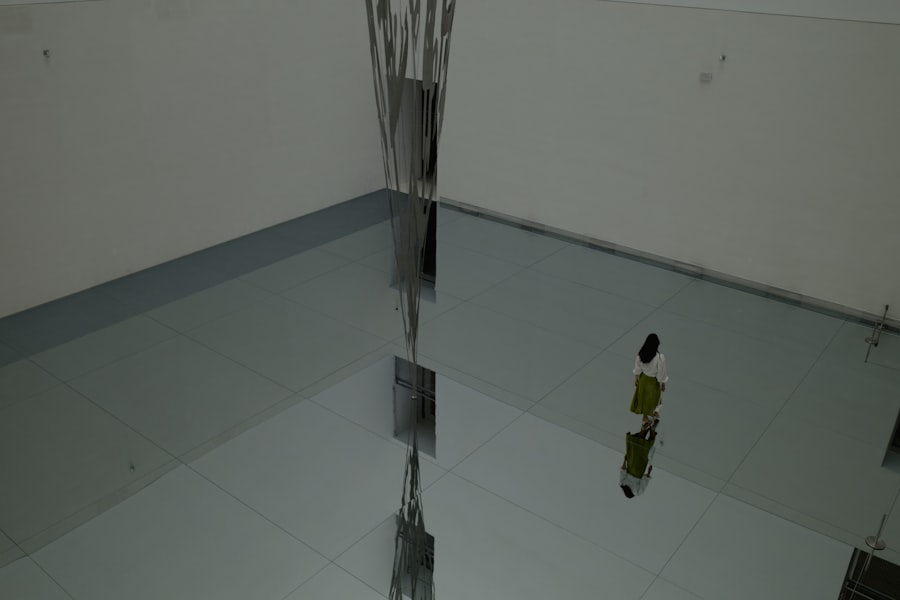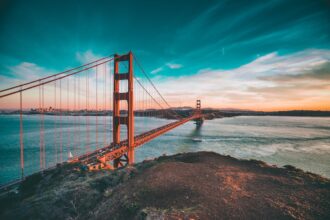The Double-Slit Experiment stands as one of the most profound demonstrations in the realm of quantum mechanics, captivating the minds of scientists and laypeople alike. At its core, this experiment challenges your understanding of reality, revealing the strange and often counterintuitive nature of light and matter. By showcasing how particles can exhibit both wave-like and particle-like behavior, the Double-Slit Experiment serves as a gateway into the enigmatic world of quantum physics.
As you delve deeper into this topic, you will uncover not only the mechanics of the experiment itself but also its implications for our understanding of consciousness, reality, and the universe. As you explore the intricacies of the Double-Slit Experiment, you will find that it raises fundamental questions about the nature of observation and measurement. What does it mean for something to exist in a particular state?
How does your act of observing influence the behavior of particles? These questions are not merely academic; they touch upon the very fabric of reality and challenge your perceptions of existence. The Double-Slit Experiment is not just a scientific curiosity; it is a profound inquiry into the nature of reality itself.
Key Takeaways
- The double-slit experiment is a fundamental experiment in quantum mechanics that demonstrates the wave-particle duality of light and matter.
- The historical background of the double-slit experiment dates back to the early 19th century, with significant contributions from scientists such as Thomas Young and Albert Einstein.
- The wave-particle duality of light and matter suggests that particles such as electrons and photons can exhibit both wave-like and particle-like behavior.
- The setup and procedure of the double-slit experiment involve passing a beam of particles through two slits to observe the resulting interference pattern on a screen.
- The role of consciousness in the double-slit experiment has sparked controversy and debate, with some suggesting that the act of observation affects the behavior of particles.
Historical Background of the Double-Slit Experiment
The origins of the Double-Slit Experiment can be traced back to the early 19th century when Thomas Young first conducted his groundbreaking work on light. Young’s experiment was designed to demonstrate that light behaves as a wave, a radical idea at a time when the particle theory of light was dominant. By shining light through two closely spaced slits, he observed an interference pattern on a screen behind the slits, which could only be explained if light were indeed a wave.
As you consider the historical context, it becomes clear that Young’s findings were not merely an isolated incident but rather part of a larger scientific revolution. The 20th century brought with it a deeper understanding of quantum mechanics, with physicists like Albert Einstein and Niels Bohr expanding upon Young’s initial discoveries.
The Double-Slit Experiment evolved from a simple demonstration of wave behavior into a complex inquiry into the nature of reality itself. This evolution reflects humanity’s ongoing quest to understand the universe and our place within it.
The Wave-Particle Duality of Light and Matter

One of the most striking revelations stemming from the Double-Slit Experiment is the concept of wave-particle duality. As you engage with this idea, you will come to appreciate that particles such as electrons and photons can exhibit properties of both waves and particles depending on how they are observed. When unobserved, these particles behave like waves, creating interference patterns that suggest they are in multiple states simultaneously.
However, once you measure or observe them, they collapse into a definite state, behaving like particles. This duality challenges your intuitive understanding of how objects should behave. In your everyday experience, you perceive objects as either solid entities or waves in motion, but quantum mechanics reveals that at a fundamental level, this distinction blurs.
The implications are profound: reality is not as straightforward as it seems. As you ponder this duality, consider how it influences not only your understanding of physics but also philosophical inquiries about existence and consciousness.
The Setup and Procedure of the Double-Slit Experiment
| Aspect | Details |
|---|---|
| Experiment Name | Double-Slit Experiment |
| Setup | Two slits, light source, screen |
| Procedure | 1. Light source emits photons 2. Photons pass through slits 3. Interference pattern observed on screen |
| Observation | Wave-like interference pattern |
| Conclusion | Light exhibits wave-particle duality |
To fully grasp the significance of the Double-Slit Experiment, it’s essential to understand its setup and procedure. Imagine a source emitting particles—be it photons or electrons—directed toward a barrier with two closely spaced slits. Behind this barrier lies a detection screen that captures the particles after they pass through the slits.
When you conduct this experiment without any observation at the slits, you will notice an interference pattern emerging on the screen, indicative of wave behavior. However, if you introduce a measuring device to determine which slit each particle passes through, everything changes. Instead of producing an interference pattern, you will observe two distinct bands corresponding to each slit, suggesting that particles have behaved like classical objects rather than waves.
This stark contrast between observed and unobserved states highlights the peculiar nature of quantum mechanics and invites you to question what it means to observe something in the quantum realm.
Observing the Interference Pattern
As you analyze the interference pattern produced by unobserved particles in the Double-Slit Experiment, you will find it mesmerizing. The pattern consists of alternating bright and dark fringes on the detection screen, a clear indication that waves are interacting with one another—constructively in some areas and destructively in others. This phenomenon illustrates how particles can exist in superposition, occupying multiple states simultaneously until an observation is made.
The beauty of this interference pattern lies not only in its visual appeal but also in its implications for your understanding of reality. It suggests that at a fundamental level, particles do not have definite positions or states until they are measured. This realization can be unsettling; it challenges your perception of causality and determinism in the universe.
As you contemplate these ideas, consider how they might influence your worldview and your understanding of existence itself.
The Role of Consciousness in the Double-Slit Experiment

One of the most intriguing aspects of the Double-Slit Experiment is its connection to consciousness and observation. As you delve into this topic, you will encounter various interpretations that suggest your act of observing plays a crucial role in determining the behavior of particles. Some interpretations posit that consciousness itself may influence quantum events, leading to debates about whether reality exists independently of observation.
This notion raises profound philosophical questions about the nature of reality and your role within it. If your consciousness can affect physical phenomena at such a fundamental level, what does that imply about your relationship with the universe? Are you merely an observer, or do you play an active role in shaping reality?
These questions invite you to reflect on your understanding of existence and challenge conventional notions about separation between observer and observed.
Quantum Mechanics and the Uncertainty Principle
As you explore further into quantum mechanics, you will encounter Heisenberg’s Uncertainty Principle, which states that certain pairs of physical properties cannot be simultaneously known with arbitrary precision. For instance, if you measure a particle’s position accurately, its momentum becomes uncertain, and vice versa. This principle is intricately linked to the findings of the Double-Slit Experiment and reinforces the idea that at a quantum level, certainty is elusive.
The Uncertainty Principle challenges your intuitive grasp of measurement and reality. In classical physics, you might assume that measuring an object’s properties provides definitive information about it; however, quantum mechanics reveals that uncertainty is inherent in nature itself. As you contemplate this principle, consider how it reshapes your understanding of knowledge and existence—suggesting that perhaps uncertainty is not just an obstacle but an intrinsic aspect of reality.
Applications of the Double-Slit Experiment in Modern Technology
The implications of the Double-Slit Experiment extend far beyond theoretical physics; they have practical applications in modern technology as well. Quantum mechanics has paved the way for innovations such as quantum computing and quantum cryptography. These technologies leverage principles derived from experiments like the Double-Slit to create systems that operate on fundamentally different principles than classical computing.
As you consider these applications, think about how they might transform industries ranging from information technology to secure communications. Quantum computers have the potential to solve complex problems at speeds unattainable by classical computers, while quantum cryptography promises unbreakable encryption methods based on quantum principles. The Double-Slit Experiment serves as a foundational pillar for these advancements, illustrating how deep scientific inquiries can lead to revolutionary technological breakthroughs.
Criticisms and Controversies Surrounding the Double-Slit Experiment
Despite its significance, the Double-Slit Experiment has not been without its criticisms and controversies. Some skeptics argue that interpretations based on consciousness influencing quantum events are speculative and lack empirical support. Others contend that alternative explanations exist for observed phenomena that do not require invoking consciousness or wave-particle duality.
As you engage with these criticisms, consider how they reflect broader debates within science about interpretation versus observation. The nature of scientific inquiry often involves grappling with uncertainty and differing perspectives; thus, exploring these controversies can deepen your understanding of both quantum mechanics and scientific methodology itself.
The Future of Quantum Mechanics and the Double-Slit Experiment
Looking ahead, the future of quantum mechanics remains vibrant with possibilities for exploration and discovery.
Quantum entanglement, superposition, and other principles derived from this experiment could lead to breakthroughs in fields such as materials science and energy production.
As you ponder these future developments, consider how they might reshape not only technology but also philosophical inquiries about existence and consciousness. The ongoing exploration of quantum mechanics invites you to remain curious about the universe’s mysteries while recognizing that our understanding is always evolving.
The Impact of the Double-Slit Experiment on Our Understanding of the Universe
In conclusion, the Double-Slit Experiment stands as a monumental achievement in science that has profoundly impacted our understanding of reality. By revealing wave-particle duality and challenging conventional notions about observation and measurement, this experiment invites you to reconsider your perceptions of existence itself. Its implications extend beyond physics into philosophy, consciousness studies, and technology—demonstrating how deeply interconnected these fields are.
As you reflect on what you’ve learned about the Double-Slit Experiment, recognize its role as both a scientific inquiry and a philosophical exploration. It serves as a reminder that our quest for knowledge is ongoing and that each discovery opens new avenues for understanding ourselves and our place in the universe. The mysteries unveiled by this experiment continue to inspire curiosity and wonder—encouraging you to embrace uncertainty as an integral part of your journey through life.
The double-slit experiment is a fundamental demonstration in quantum mechanics that reveals the dual nature of light and matter, showcasing how particles such as electrons can display characteristics of both waves and particles. This experiment has profound implications for our understanding of the quantum world, challenging classical intuitions about the nature of reality. For those interested in exploring the psychological implications of such paradigm-shifting scientific discoveries, an article on [Unplugged Psych](https://www.unpluggedpsych.com/) delves into how these concepts can influence our perception of reality and consciousness. This exploration bridges the gap between physics and psychology, offering a unique perspective on how scientific phenomena can impact human thought and behavior.
FAQs
What is the double-slit experiment?
The double-slit experiment is a fundamental experiment in quantum mechanics that demonstrates the wave-particle duality of light and matter. It involves shining a light or firing particles through two closely spaced slits onto a screen, and observing the resulting interference pattern.
What does the double-slit experiment demonstrate?
The double-slit experiment demonstrates that particles such as electrons and photons can exhibit both wave-like and particle-like behavior. When fired through the slits, they create an interference pattern on the screen, indicating wave-like behavior, but they also arrive at the screen as discrete particles, indicating particle-like behavior.
What is the significance of the double-slit experiment?
The double-slit experiment challenges our classical understanding of particles and waves, and has profound implications for our understanding of the nature of reality at the quantum level. It has led to the development of the wave-particle duality theory and has had a major impact on the field of quantum mechanics.
Who conducted the double-slit experiment?
The double-slit experiment was first conducted by Thomas Young in 1801 using light, and later by scientists such as Albert Einstein, Niels Bohr, and Richard Feynman using electrons and other particles. It continues to be a subject of ongoing research and experimentation in the field of quantum mechanics.




